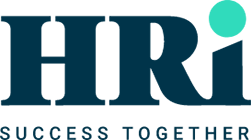Latest from HRi
Navigating performance management and employee wellbeing in a virtual world
Managing performance has always been one of the key challenges that managers experience. All businesses large or small, even those in the Not-for-profit sector, have to meet their goals and succeed. They have to remain competitive and deliver to their clients, stakeholders, and shareholders, otherwise they will fail, leading to job losses.
That’s where effective performance management comes in. It is the bane of many a managers life, however when it is done well, both the employee and the business thrive.
Performance management has come under fire over the past few years because of the format it used to take. The once a year, dreaded conversation about staff performance was seen as the wrong way to manage people because it created a host of problems – managers not equipped to hold difficult conversations; managers waiting until the once a year meeting to highlight all the problems and frustrations that may have built up during the year, instead of having dealt with them earlier; and conflict over ratings especially when aligned to pay scales and bonus pay-outs. As a result, it became a bone of contention and stress for both parties.
Many companies moved away from the once a year ‘tick box’ conversation and introduced a more forward-thinking approach – regular one on one check-ins and quarterly reviews. This was easy to do when everyone was in the office.
Then came COVID-19 and the move to working in the virtual world. The normal organisational boundaries are blurred, and these changes have impacted how teams’ function within businesses. It has made leadership and management increasingly demanding.
Also, the focus on wellbeing means managers are now worried about dealing with their teams’ performance issues in case it triggers mental health issues which are being widely publicised in the media.
The manager might have his/her own targets to meet and is worried that by bringing up performance issues they will be perceived as lacking empathy. This in turn affects the wellbeing of the manager as well as they become anxious.
So, how do we navigate this situation?
Trust is important. Leena Nair, Chief Human Resources Officer at Unilever, an organisation that is not new to staff working remotely commented on Linkedin “If you don’t trust your people that’s YOUR problem not theirs!’ She alluded to the fact that if an organisation cannot trust its people, it’s because the wrong people were hired in the first place. Also important is setting clear expectations and having clarity from the start. But what happens if the horse has bolted already – there is lack of trust and expectations are unclear?
All is not lost. There is always time for a fresh start.
My top tips:
- Regroup and re-set. Have an honest conversation about goals and priorities which may have changed since the start of COVID-19. (You may need some intervention from a HR Specialist to help you do this).
- Set new goals – Be realistic.
- Have regular check-ins, not just about work but about wellbeing. This can be done by allocating set times take the form of a phone call and does not necessarily have to take place on Zoom or video-conferencing all the time.
- Provide support where needed.
- Focus on delivery and effectiveness.
- If everything has been put in place to support employees and they are still not delivering, and you can show that you have acted reasonably, then the usual performance management/capability process should take place.
Performance management and wellbeing are not mutually exclusive. We should be able to strike a balance between the two. Now, more than ever, we need our businesses and our people to succeed.
Willorna Brock, Founder of Goshenn HR, is a Senior HR Business partner and independent HR consultant. Willorna is passionate about all things HR, is fun loving; a mother of 3, a foodie, lotions and potions addict…and strong advocate of wellbeing. As a former teacher, Willorna also provides Careers advice for young people and is author of ‘Job hunting myths secrets and truths’.
